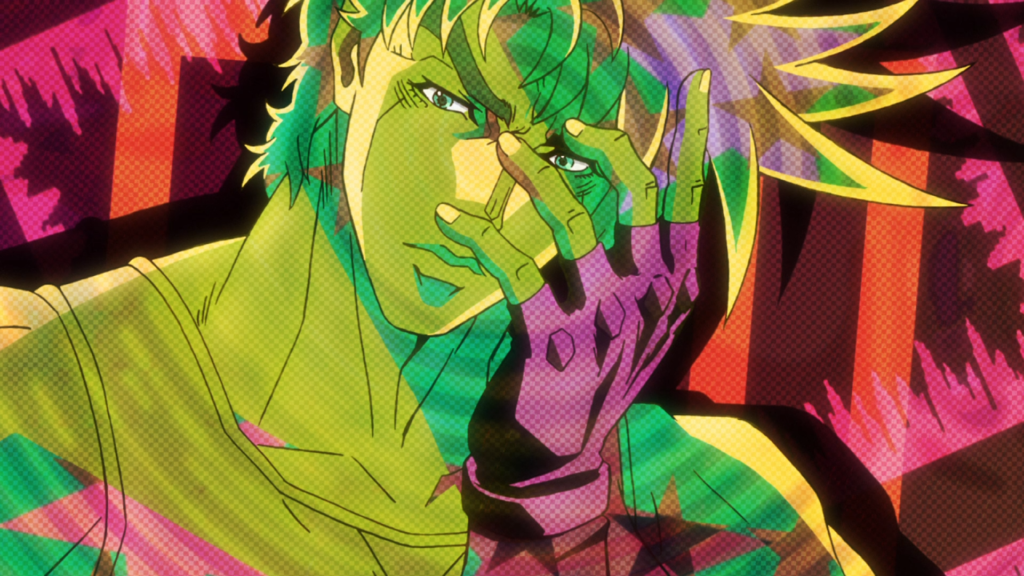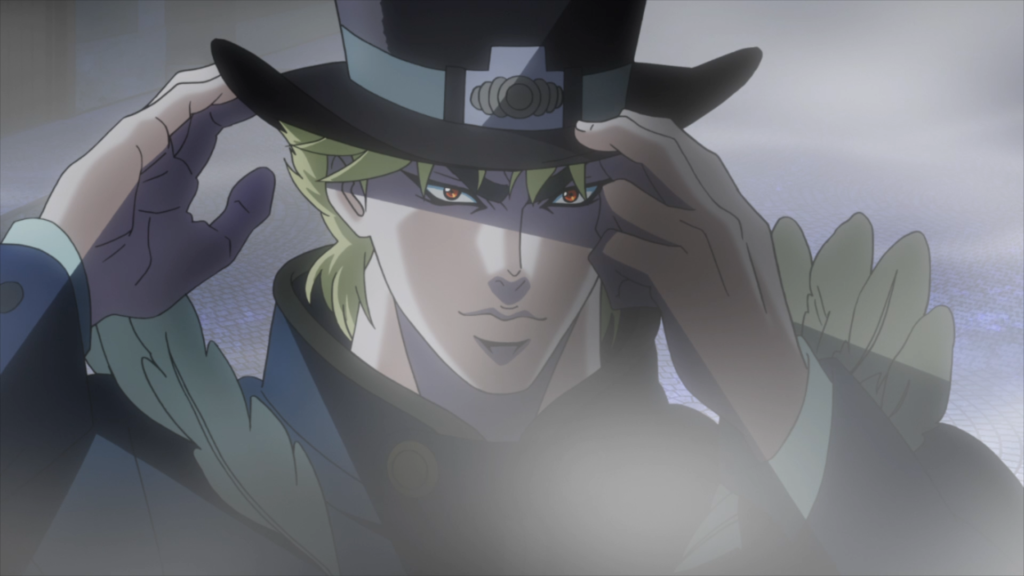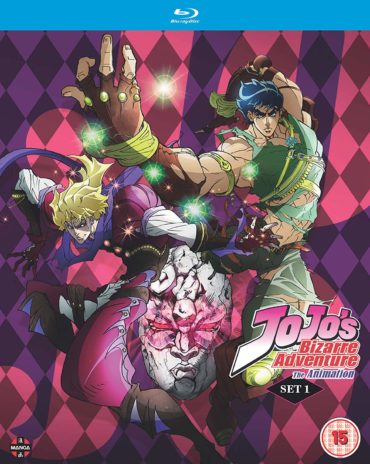JoJo’s Bizarre Adventure Set 1 Review
Much has been talked about concerning the trouble that this series has had in the transition from manga to anime. Despite being the ninth-longest running manga ever made in terms of total number of volumes, created in 1987 by Hirohiko Araki and still going today, the first truly successful anime version of JoJo’s Bizarre Adventure didn’t come out till 2012. There are plus points to this of course – namely the fact there is no need for any filler arcs, which is rare for Shonen Jump series.
It is also true however that the series has had issues with its release in the UK. This is the third time that the original opening season has been released in this country. First was in 2015 by Warner Bros., and then again in 2018 by Manga Entertainment under the Kaze label. Both of these versions have been reviewed by AUKN in past, back in 2015 and 2018 respectively. Now Manga Entertainment are giving the first season a third UK release under its own label, to coincide with the debut release of the second season this week.

You can look back at our previous two reviews for a more detailed guide as the plots of the story, but to provide the basics, the series follows multiple generations of the Joestar family, all of whom are nicknamed “JoJo”. The first story arc (Disc 1), Phantom Blood, is set in Victorian England and follows Jonathan “JoJo” Joestar in his battles against his evil adopted brother Dio, who uses a magic stone mask in an attempt to give himself demonic powers. The second arc (Discs 2-3), Battle Tendency, is set in 1938 and follows Jonathan’s grandson Joseph in New York, who learns about an attempt to bring stone “Pillar Men” statues (that are related to the stone mask) back to life and tries to stop it.
This anime certainly has plenty of appealing aspects to it, the main one of which is the art. Some might be put off by the bold colours used, but it is the primary way that makes JoJo’s Bizarre Adventure stand out from so many other fight-focused anime shows. Hopefully this doesn’t sound too pretentious, but these bright colours feel somewhat like pop art. You could take one still of one of the JoJos in these bright colours, replicate it so you have four of them in different shades, and easily parody Andy Warhol’s prints of Marilyn Monroe.
The fight sequences also stand out from most shonen series. Unlike several other series of its kind, there is plenty of blood spilt and lots of people get killed, including many of the central characters. Let’s just say it deserves to be given a 15 certificate. Some of the tools used in JoJo add to the “bizarre” label: from hats with razors in them, powerful energy that can allow people to hold water in upside-down glasses or make a rope from icicles, to an increasingly robotic Nazi; it does go beyond what many people expect from these kind of shows.

When it comes to opting for the sub or the dub, personally speaking, I think you should probably go for your personal preference. Regarding the dub, it’s not the worst I’ve ever heard. Some might find it a bit over-the-top especially in the first arc due to what some people might consider to be Americans getting English accents wrong, but then again, because JoJo is so over-the-top, it gives actors the excuse to not have to be accurate. You get the feeling that Dick van Dyke’s cockney accent might just pass as plausible among the other Londoners that appear in the show – but only just. Personally, I prefer subtitles, but it has to be said that some of the choice of language does jar. The use of some British-English terms in the first arc feels horribly forced among the rest of the dialogue. The odd “crikey” and “plonker” feel a little out of place, but sentences like “You’re a goner, bloke!” and “Good bloody grief!” just sound wrong to English ears.
What feels like the worst moment in the story takes place in the Battle Tendency arc where one of the Pillar Men, Kars, finds himself fighting against Stroheim, a Nazi commander who ends up fighting on JoJo’s side. As the fight begins, Joseph Joestar thinks to himself of Stroheim: “I mean, he’s not exactly a bad guy”… He’s a Nazi! I realise that in this situation his is, appropriately enough “bizarrely”, the lesser of two evils, but the guy you are backing is still the one in the SS uniform.

There are not that many extras in this collection: just trailers and textless opening and closing. However, the music that appears in this section and the rest of the series provides a decent mix that should give everyone something to enjoy. “Sono Chi no Sadame” by Hiroaki Tominaga for the first arc, and “Bloody Stream” by Coda for the second are both fun listens, and mix well with the bright and colourful opening sequences. Somewhat unusually, the closing theme is a British track: the song “Roundabout” from the prog-rock group Yes, a track that reportedly Araki listened to while making the manga and which helped spawn a meme online. It’s been dubbed one of the few memes whose roots predate the internet. The main music in the show is composed by Taku Iwasaki, the man who also made the music for my favourite ever anime Gurren Lagann. Again he is on fine form, with the music here ranging from classic to modern.
There are many reasons to watch JoJo’s Bizarre Adventure: the art, the music, the action. But perhaps one of the best is simply because this is a hugely important series based on the work of one of the most established manga artists out there. Araki recently even created a poster for the forthcoming Tokyo Paralympics. He is one of the greats and his work is to be respected. I, for one, certainly want to get my hands on the second set which is out now.


